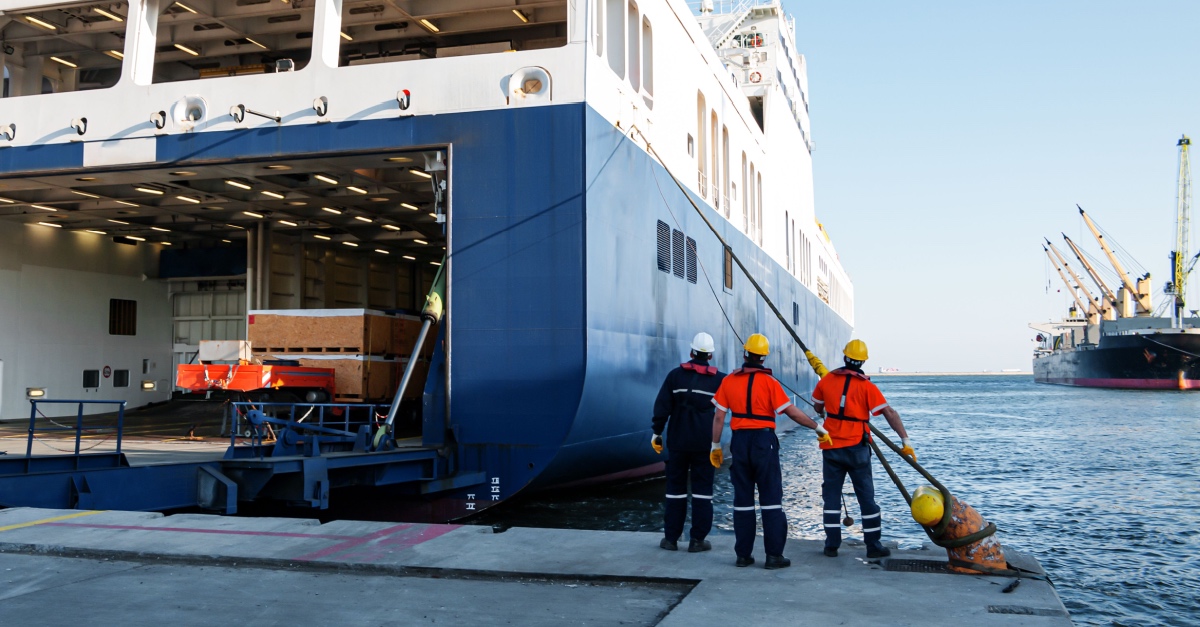
Automation is still a hot button for the ILA and has reversed massive progressions in the contract talks between the ILA and USMX. Contract talks have been halted, which could jeopardize the January deadline. Meanwhile, the U.S. freight industry is facing a prolonged recession, which experts believe might improve by mid-2025. That said, there is still no light at the end of the tunnel.
Continue reading to find out more about news and trends shaping the industry.
The International Longshoremen’s Association (ILA) has halted contract negotiations with the United States Maritime Alliance (USMX) in a U-turn that could shake shippers, supply chains, and terminal operators. The ILA has accused USMX of pushing automation technology that threatens union jobs. This accusation comes as negotiations over a six-year master contract — impacting 45,000 workers across East and Gulf Coast ports — hang in the balance.
The ILA insists that automation undermines its workforce and rejects technology integration into operations. Conversely, USMX emphasizes the necessity of modernization to enhance efficiency, safety, and capacity, asserting that automation aims to support — not replace — jobs while addressing future supply chain demands.
The U.S. freight industry is facing a prolonged downturn. It is increasingly likely that the freight recession, which began in May 2022 and remains active, will continue to plague the industry till mid-2025. This is according to logistics executives at the Traffic Club of Chicago, who highlighted key factors contributing to the sluggish market, such as decreased industrial production, muted demand, and flat shipping volumes.
Freight markets differ drastically across regions, with Southern California and East Coast areas showing contrasting activity levels. U.S. manufacturing output and capacity utilization remain below recent peaks, limiting freight demand growth. While consumer spending is steady, it has yet to translate into increased freight demand. A shift toward market balance is visible, but executives caution against premature optimism.
Amazon has revamped its grocery operations by merging Whole Foods and Amazon Fresh fulfillment operations. The company operates from 26 fulfillment centers and plans to expand to integrate its Whole Foods Market and Amazon Fresh platforms. With the move, the company aims to streamline delivery and expand its reach in the $1.5 trillion U.S. grocery market. The company’s strategy includes blending online and in-person shopping to offer one-stop convenience and compete with dominant physical retailers like Walmart, Target, and Kroger.
Unlike Walmart’s extensive network of 4,600 stores, Amazon struggles with limited physical retail success. The retailer’s strategy has attracted higher-income customers while maintaining proximity to 90% of Americans. Online grocery sales surged to 10.3% of the U.S. market in 2023, up from 5.3% in 2019. The new move will allow Amazon to capture these demands.
After enduring a severe two-year drought driven by El Niño that slashed vessel transits and strained trade flows, the Panama Canal is making a recovery. The canal now accommodates larger vessels, reducing transit numbers but increasing container volumes, which boosted revenue by $400–450 million in Q4. Vessel transits are gradually scaling back to 36 per day as Neo-Panamax locks, with water recovery systems reclaiming 60% of the water used, contrasting with older Panamax locks.
The U.S. accounts for 73% of canal traffic and heavily relies on this critical trade route, which handles $270 billion in annual cargo. However, despite the competition from the Suez Canal, the Panama Canal is recovering pre-drought volumes, particularly in LNG and bulk shipments. Vessel transits fell 29% during the drought, with LNG transits plummeting 66%. Innovative solutions, like land-bridge services, mitigated delays.
A rise in container volumes at U.S. West Coast ports creates challenges for rail operations, particularly at the Ports of Los Angeles and Long Beach. Rail dwell times at the Port of Long Beach are about four days, which remains manageable despite the volume spike. The Port of Los Angeles, however, reported dwell times close to eight days, far exceeding the optimal two-to-four-day range.
Other ports outside Southern California, including Oakland, are not experiencing similar congestion. Some shippers opt for cross-dock facilities to bypass rail congestion, though this is costly and increases handling. Others explore air freight or rerouting shipments through alternative ports in Mexico, Canada, or the U.S. East Coast.
The world may be in chaos, but with the right technological solutions, these problems will not necessarily impact your logistics and supply chain operations. In the face of face potential disruptions and complexities that threaten to cripple operations, a flexible and agile supply chain will prevail.
If you want this, Zengistics will leverage technology to make it happen. With us, you have:
Zengistics is the smarter option for getting logistics done more efficiently. Connect with us today.